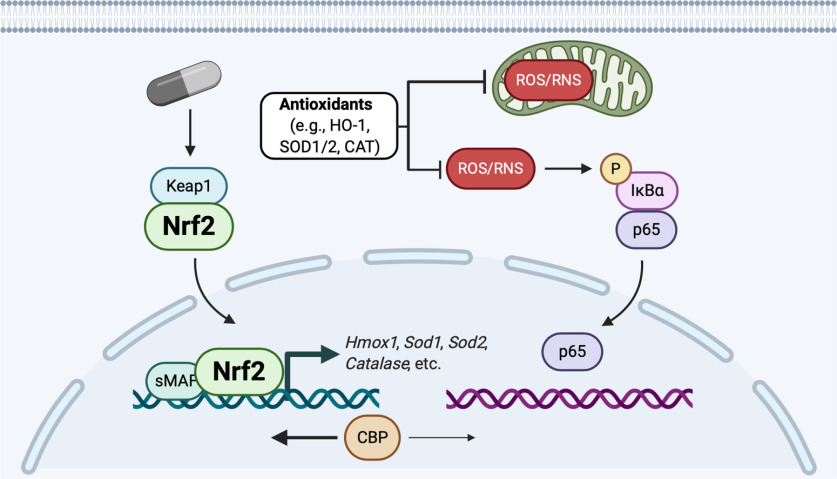Figure 2.
Nrf2 activation alleviates nitro-oxidative stress and neuroinflammation. Pharmacological agents, such as dimethyl fumarate and sulforaphane, can induce nuclear translocation of Nrf2 by disrupting its cytosolic complex with Kelch-like ECH-associated protein 1 (Keap1). Nrf2 binds to DNA, aided by small musculoaponeurotic fibrosarcoma (sMAF) proteins, increasing expression of a suite of antioxidant genes, for example, those encoding heme oxygenase-1 (HO-1), superoxide dismutase (SOD) 1 and 2, catalase (CAT), and others. Antioxidants scavenge ROS/RNS that otherwise facilitate IκBα phosphorylation, inducing NFκB-dependent proinflammatory gene expression. NFκB p65 subunit-DNA binding is further prevented through competition with Nrf2 for CREB-binding protein (CBP). Antioxidants also scavenge ROS/RNS generated by dysfunctional mitochondria. Although not depicted, antioxidants further reduce neuroinflammation by scavenging ROS/RNS that otherwise activate mitogen activated protein kinases.

